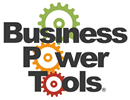How to Effectively Use Case Histories / Case Studies in Your Media Promotions
Case histories are articles developed from “success stories” that describe how your product or service has been used. Editors like to print case histories because they are interesting and can be run any time. You can also use case histories as great backup pieces in a press kit. After a new product launch, these success stories can be pitched to editors to build momentum. A good case history can make a product come alive and seem more interesting and newsworthy by clearly demonstrating how the product will benefit users.
Case history articles normally range from two paragraphs to five pages. Two pages (about 500 words) is a good length to shoot for. This will provide a reporter enough material to write an article. Some specialized publications print case histories word for word; others rewrite the material, or call the source so they can write an original story.
In the following example, Niehaus/Ryan/Haller, a San Francisco public relations agency, wrote a case history for their client, Interactive Development Environments. The case history was published first in the client’s newsletter. Then the article was reprinted for distribution to the press.
Notice the “CASE IDEAS” banner and the “Reprint” burst in the upper right-hand corner. Both credit the article to the newsletter. Photos, headlines and “pull quotes” make the page attractive. The “Profile” is also important. It lists the industry, application, platform and language. Editors can determine instantly if the materials apply to their audience.
Since some publications prefer to write the case history themselves, another option is to provide a list of customers who would be good candidates for a success story. Include the customer’s name, company, and phone number, and describe in one sentence how they use the product.
Writing a Case History Article
To construct a good case history article, follow this general outline.
- Describe the customer’s problem; include a quote, if possible.
- State how the customer discovered your product.
- Describe how the customer used your product and how they benefited from it.
- Quantify, if possible, the benefits gained (in terms of time or money saved, etc.); include a quote if possible.
- Mention what the user plans to do in the future regarding your product.
- Quote the customer regarding their satisfaction with your product; include a quote of their recommendation to other potential users, if the customer gives one.
Consider asking the customer for permission to tape record the conversation when they’re telling you about their success. Edit the recorded conversation or your written notes into a concise article, using the customer’s own words whenever possible. To keep both the customer and your product in the best light, you may need to use some discretion and correct the customer’s grammar, punctuation and choice of words. Have the customer sign a release approving your completed article.
